|
|
|
|
|
|
|
|
|
Old way of tar (pitch) production
See also an article in more detail in zipped .rtf format. (in Russian)
Download (250 Kb)
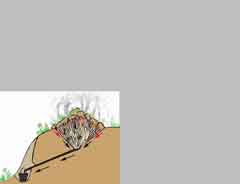 Full scale image(24Kb)
Full scale image(24Kb)Scheme of tar (pitch) pit. For the raw stuff for tar production old pine stumps were taken. In stumps, lower parts of trunks, and big roots of dry dead pines tar accumulate for years, giving yellow amber-like color to the wood. This tarwood was to be dried, hewn and split into small sticks; the sticks are to be stacked up in the funnel-shaped pit, dug right above a precipice. The way of their stacking is quite important, -- all sticks must be pointed down and inwards, towards the outlet on the pit's bottom, as shown on the drawing. Tar has to ooze along these sticks down and in, to escape the zone of burning as quickly as possible. The ready stack must be covered with a thick layer of chips (we had them in abundance at our construction site) and lit from the surface. When the whole stack surface will catch fire, it is to be covered with sod blocks and dirt, no open flame is to be left, and smoldering in the covered stack must go very slowly. Supposedly, the smoldering starts from the stack's surface and gradually spreads inside (shown with the red arrows and color), but tar melts out of the sticks and oozes down into the outlet before it can burn or evaporate in the smoldering zone (shown with the black arrows). Even the pit's bottom used to be dressed with bark to prevent tar from absorption into the ground, and the bark stayed unburned until all tar was down. This is a very labor consuming practice, one cubic meter of raw stuff can yield from 20 to 40 liters of tar, the process can take up to 3-7 days around the clock, dependently on the stack's size. The bigger a stack, the more efficient the process is, and the higher tar outcome. Many variations of the technique were described in literature, but nowadays it is demonstrated "in action" only in Oulu open air museum in Finland, and maybe in some other places in Scandinavia. Practical mastering of the technique took a lot of time and laborious experiments. |
|
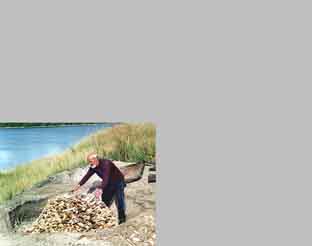
Full scale image(36Kb) Sticks are stacked up in the pit. Its bottom could be dressed with bark or clay, in this case it is covered with tin sheets. Accordingly to some techniques described in Sweden, the stack was made upon a large flat stone. Summer 2001. |
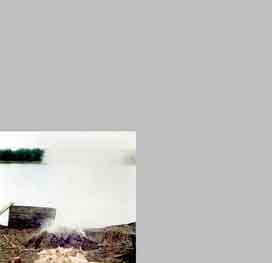
Full scale image(21Kb) The tar busting under way. Stack is covered with sod blocks to quench any open flames and keep the smoldering slow. Wooden shields are put up to cover the stack from the wind and make it smolder evenly from all sides. Summer 2001. |
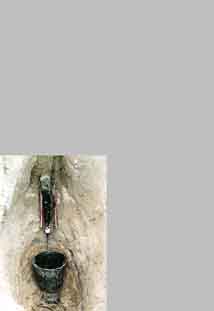
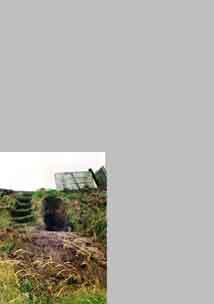 Full scale image(28Kb)
To the left -- tar is flowing trough the gutter into a bucket. Here a tin gutter was used, it was wooden in old times. Summer 2001.
Full scale image(28Kb)
To the left -- tar is flowing trough the gutter into a bucket. Here a tin gutter was used, it was wooden in old times. Summer 2001.
To the right - view from under the precipice. Full scale image(32Kb) |
|
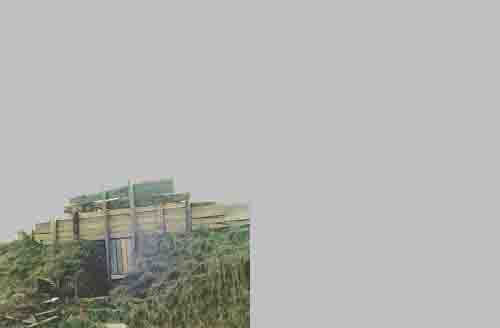 Full scale image(38Kb)
Full scale image(38Kb)In the next season the tar pit has been improved, extended and the precipice was reinforced with some planks. The tar yield from a single load reached 100 liters, which means that the pit contained approx. 4 m3 of wood. September 2002. |
|
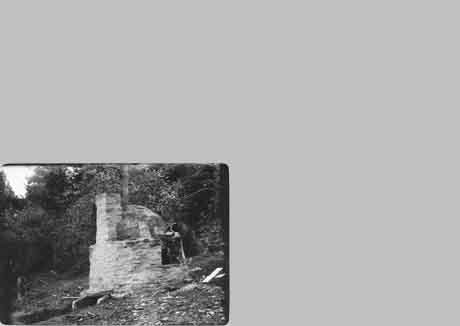 Full scale image(54Kb)
Full scale image(54Kb)Brick tar kiln in Besov Nos village (Carelia). Photo: Gustav Hallström, 1910. From Umeå University photo archive Along with simple pits, there existed more elaborate brick kilns, where the tarwood was decomposing into tar, charcoal and gases in a separate chamber, without access of air. Very much in the same way as in modern plants. Such a kiln also supplied village smithy with quality coal. |
|
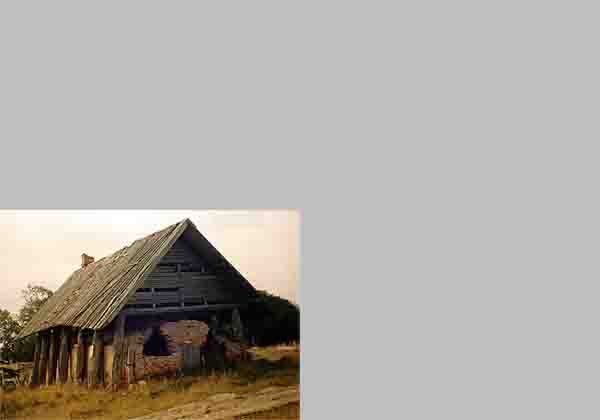 Full scale image(90Kb)
Full scale image(90Kb)Brick tar kiln on Solovki islands, built by Solovetski cloister. Now partly destroyed. Photo August 2005. Absence of tar drains, fire-chambers and ducts makes one suspect that the structure was initially just a coal burning-off kiln, which was later converted into tar kiln by adding iron smoke tubes inside it. Tubes were apparently from some old steam boiler. |
|
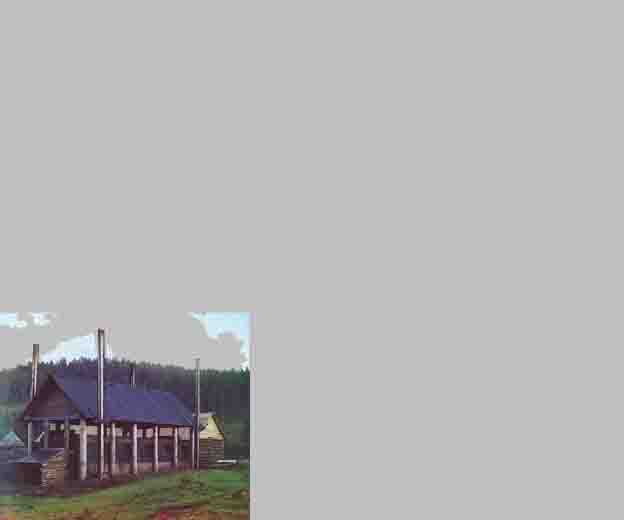 Full scale image(78Kb)
Full scale image(78Kb)For comparison -- a kiln for coal burning-off at metallurgical works at Satkinsk, Ural. Color photo taken in year 1910. From Prokudin-Gorskii collection in US Congress library. (color separation achieved by taking 3 black-and-white frames of the same scene trough different color filters) |
|
|
|
|
|
|
|
|
|
|
last update: December 2006 report problems with this page to ![]()